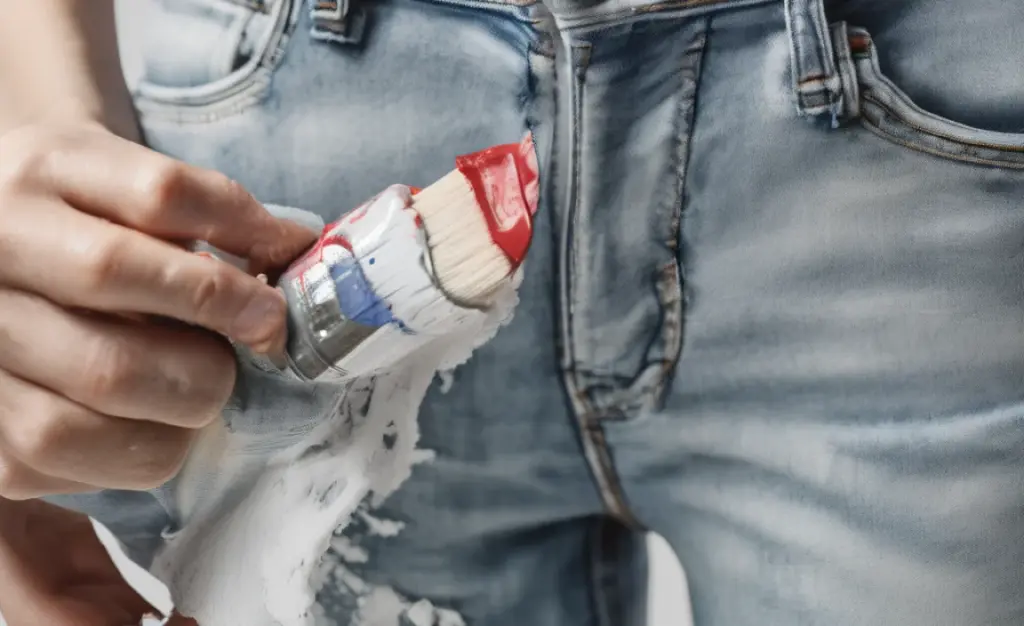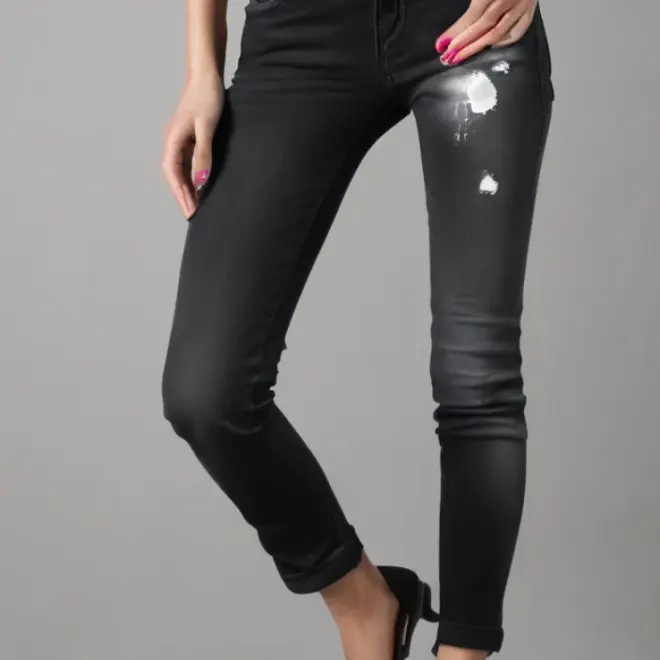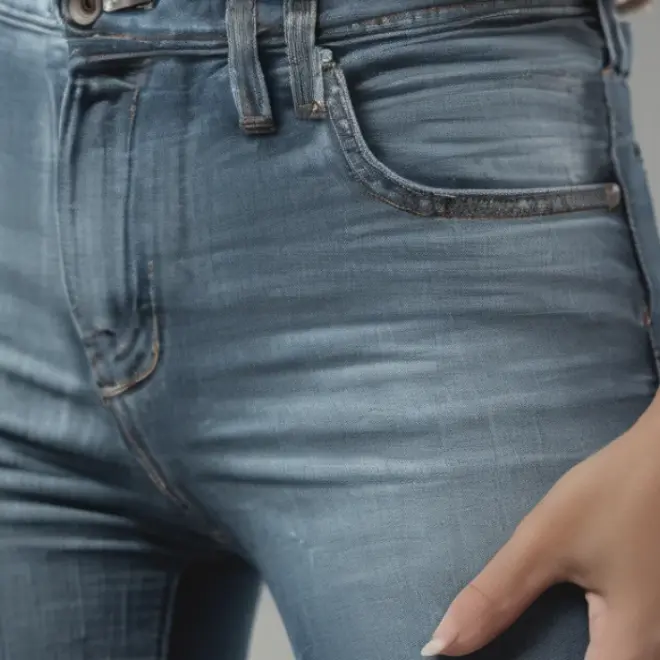Quick Summary: Successfully removing acrylic paint from light wash jeans is achievable. This guide details proven methods using common household items and gentle techniques to lift paint stains without damaging your favorite denim, ensuring your jeans look good as new.
Proven Ways To Remove Acrylic Paint From Light Wash Jeans
Ah, light wash jeans. A wardrobe staple for a reason! They’re versatile, stylish, and go with almost everything. But let’s face it, they can also be a magnet for accidents, especially when you’re working on a creative project or enjoying a fun DIY session. A splatter of acrylic paint can feel like a denim disaster, particularly on lighter washes where stains are more visible. Don’t despair! What might seem like a permanent mark can often be lifted with the right approach. This guide is here to walk you through simple, effective methods to rescue your jeans, so you can get back to loving them, paint-free.
Understanding Acrylic Paint and Denim
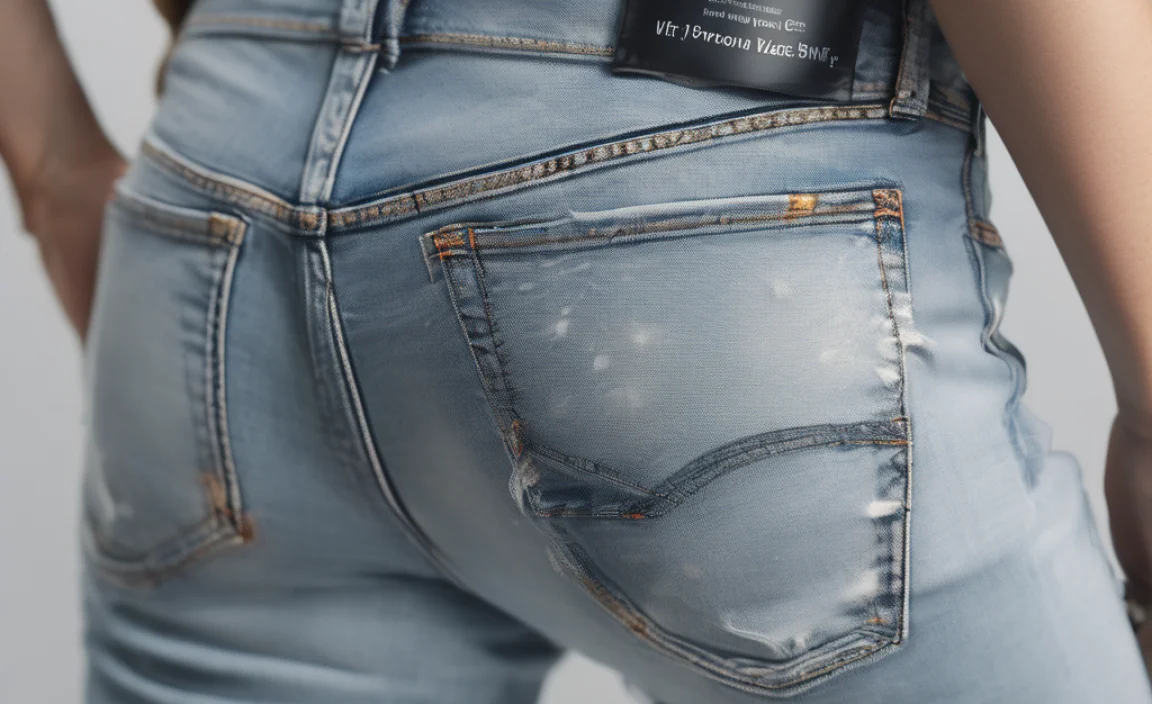
Before we dive into the removal process, it’s helpful to understand what we’re dealing with. Acrylic paint is essentially a pigment suspended in an acrylic polymer emulsion. When it dries, it forms a flexible, water-resistant plastic film. This means fresh paint is much easier to remove than dried paint. Denim, on the other hand, is a sturdy cotton twill fabric. While durable, it can be sensitive to harsh chemicals and vigorous scrubbing, which can lead to fading, stretching, or even tearing. The key is to use methods that break down the paint without harming the fabric’s integrity and color, especially on delicate light washes.
When the Paint is Fresh: Act Fast!
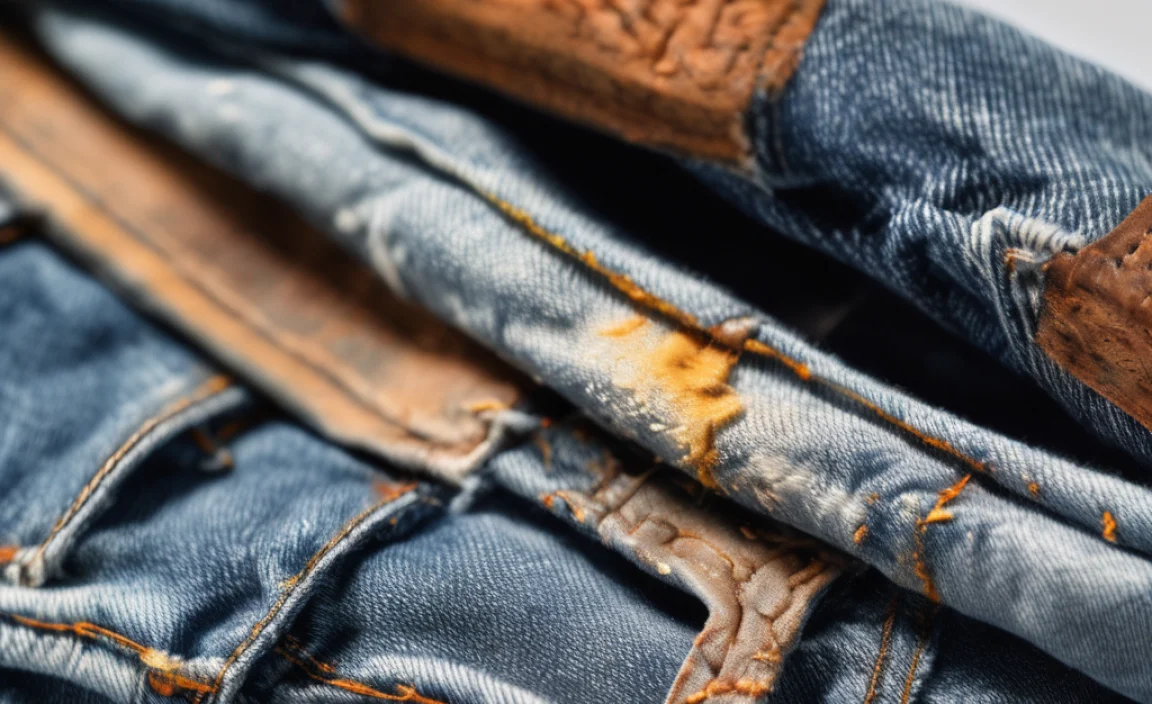
The golden rule of stain removal: the sooner, the better. If you notice an acrylic paint splatter on your light wash jeans while the paint is still wet, you have the best chance of removing it with minimal effort.
What You’ll Need:
- Clean cloths or paper towels
- Cool water
- Mild dish soap (optional)
Step-by-Step:
- Carefully Blot: Do not rub the wet paint, as this can spread it further into the denim fibers. Instead, use a clean cloth or paper towel to gently blot up as much of the excess wet paint as possible. Work from the outside of the stain towards the center to avoid spreading.
- Rinse with Cool Water: Turn the jeans inside out so the water pressure goes against the back of the stain. Run cool water through the affected area from the backside of the fabric. This helps push the paint out of the fibers rather than deeper in.
- Apply Mild Soap (If Needed): If a faint mark remains, you can add a tiny amount of mild dish soap to the damp area. Gently work it into the fabric with your fingers.
- Rinse Again: Thoroughly rinse the soap away with cool water.
- Launder as Usual: Once you’ve removed the wet paint, wash the jeans in your washing machine on a cool cycle with your regular detergent. Before putting them in the dryer, check if the stain is completely gone. Heat from the dryer can set any remaining paint, making it much harder to remove. If any trace is still visible, repeat the steps or try a different method from this guide.
Tackling Dried Acrylic Paint: Gentle Persistence is Key
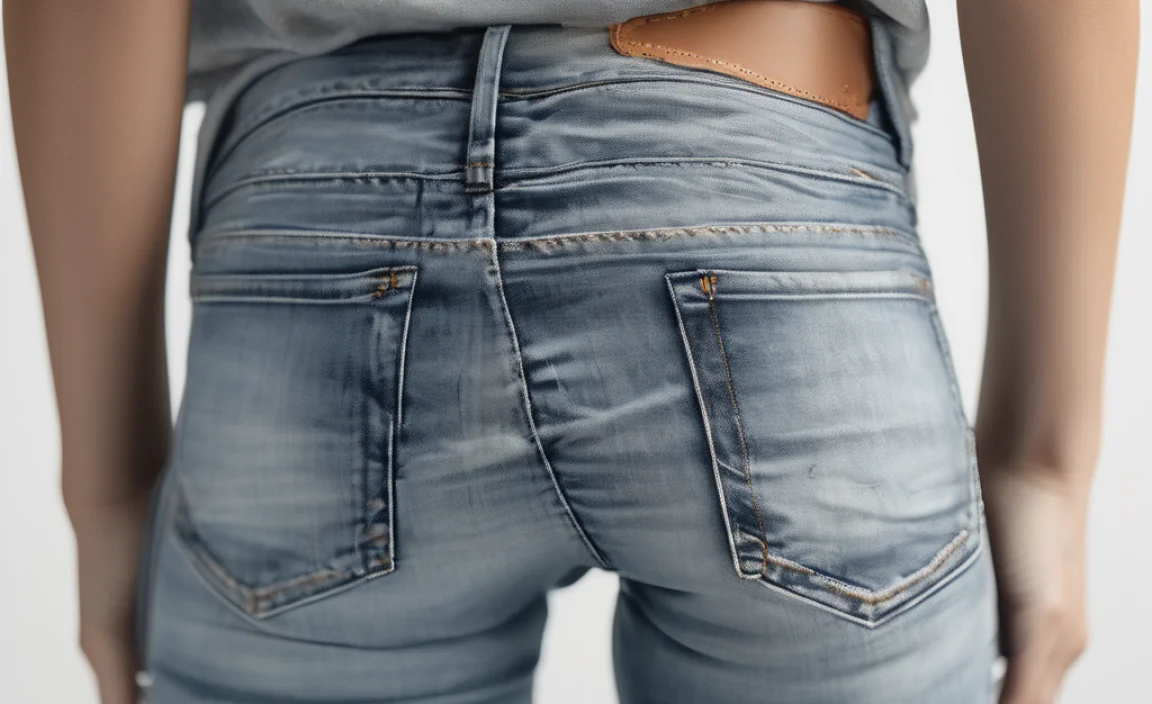
Dried acrylic paint is trickier, but not impossible. The goal here is to soften the dried paint enough for it to lift away from the denim fibers. Patience and a gentle touch are your best friends.
Method 1: Rubbing Alcohol (Isopropyl Alcohol)
Rubbing alcohol is a common solvent that can break down dried acrylic paint. It’s generally safe for most denim, but it’s always a good idea to test it on an inconspicuous area first.
What You’ll Need:
- Isopropyl alcohol (70% or 90%)
- Clean cloths or cotton balls
- A soft-bristled brush (like an old toothbrush)
- Cool water
- Mild dish soap or laundry detergent
Step-by-Step:
- Test a Small Area: Before applying alcohol to the stain, dab a small amount on an inside seam or hem. Let it sit for a few minutes, then blot. Check for any color loss or damage to the denim. If it looks okay, proceed.
- Saturate the Stain: Place a clean cloth or thick paper towels underneath the stained area inside the jeans. This will absorb excess alcohol and paint. Then, liberally apply rubbing alcohol directly onto the dried paint stain using a clean cloth or cotton ball. You can also use a spray bottle for even application.
- Let it Soak: Allow the alcohol to sit on the paint for about 5-10 minutes. This gives it time to start softening the dried acrylic.
- Gently Scrape/Brush: Use the soft-bristled brush to gently scrape or brush away the softened paint. You should see the paint starting to lift. Avoid aggressive scrubbing, which can damage the fabric.
- Blot and Repeat: Blot up the loosened paint with a clean cloth. You’ll likely need to repeat the saturation, soaking, and brushing process several times. As you work, you’ll see more paint transferring to the cloth or paper towels underneath.
- Rinse and Wash: Once you’ve removed as much paint as possible, rinse the area thoroughly with cool water. Then, wash the jeans as usual in a cool cycle with detergent. Again, air dry and check for any remaining paint before using a dryer.
Method 2: Hairspray (Alcohol-Based)
Many hairsprays contain alcohol, making them surprisingly effective for tackling acrylic paint. Ensure you’re using an alcohol-based hairspray for best results.
What You’ll Need:
- Alcohol-based hairspray
- Clean cloths or paper towels
- Soft-bristled brush
- Cool water
- Mild dish soap or laundry detergent
Step-by-Step:
- Protect Your Work Surface: Place a clean cloth or paper towels under the stained area.
- Spray Generously: Spray the hairspray directly onto the dried acrylic paint, ensuring the stain is well-saturated.
- Let it Sit: Allow the hairspray to work on the paint for about 5-10 minutes.
- Gently Scrape: Use the soft-bristled brush to gently scrape and loosen the paint.
- Blot and Repeat: Blot up the loosened paint with a clean cloth. Repeat the spraying, sitting, and scraping process until the paint is gone.
- Rinse and Launder: Rinse the area with cool water. Launder the jeans in a cool cycle with detergent. Air dry to check your work before heat-setting.
Method 3: Acetone (Use with Extreme Caution)
Acetone is a powerful solvent. It can be very effective at dissolving acrylic paint, but it can also damage or discolor denim, especially lighter washes. This method should be a last resort and requires careful testing and application.
What You’ll Need:
- Pure acetone (nail polish remover with acetone, but check the concentration). Avoid removers with added oils or colors.
- Clean cloths or cotton balls
- Soft-bristled brush
- Cool water
- Mild dish soap or laundry detergent
Step-by-Step (Proceed with Caution):
- Test, Test, Test! This is crucial. Apply a tiny amount of acetone to a hidden area of your jeans. Wait a few minutes and check for any color lift or fabric damage before proceeding.
- Protect the Area: Place absorbent cloths or paper towels underneath the stain to catch any drips.
- Apply Sparingly: Dampen a cotton ball or cloth with acetone. Dab it onto the paint stain. Do not saturate the fabric.
- Work Quickly and Gently: Gently dab and then gently rub the paint with the acetone-dampened cloth. You should see the paint start to break down. Avoid aggressive rubbing, which can spread the stain or damage the denim.
- Blot and Repeat: Use a clean part of the cloth to blot away the dissolved paint. Repeat with fresh acetone-dampened cotton balls as needed.
- Neutralize and Wash: Once the paint is gone, immediately rinse the treated area thoroughly with cool water. You may want to wash the entire garment afterward in a cool cycle with a mild detergent to remove any residual acetone. Air dry.
Authoritative Resource: For more general advice on fabric care and stain removal, the Utah State University Extension offers practical, research-based tips on laundry and fabric maintenance that can help you understand fabric properties and effective cleaning methods.
Special Considerations for Light Wash Jeans
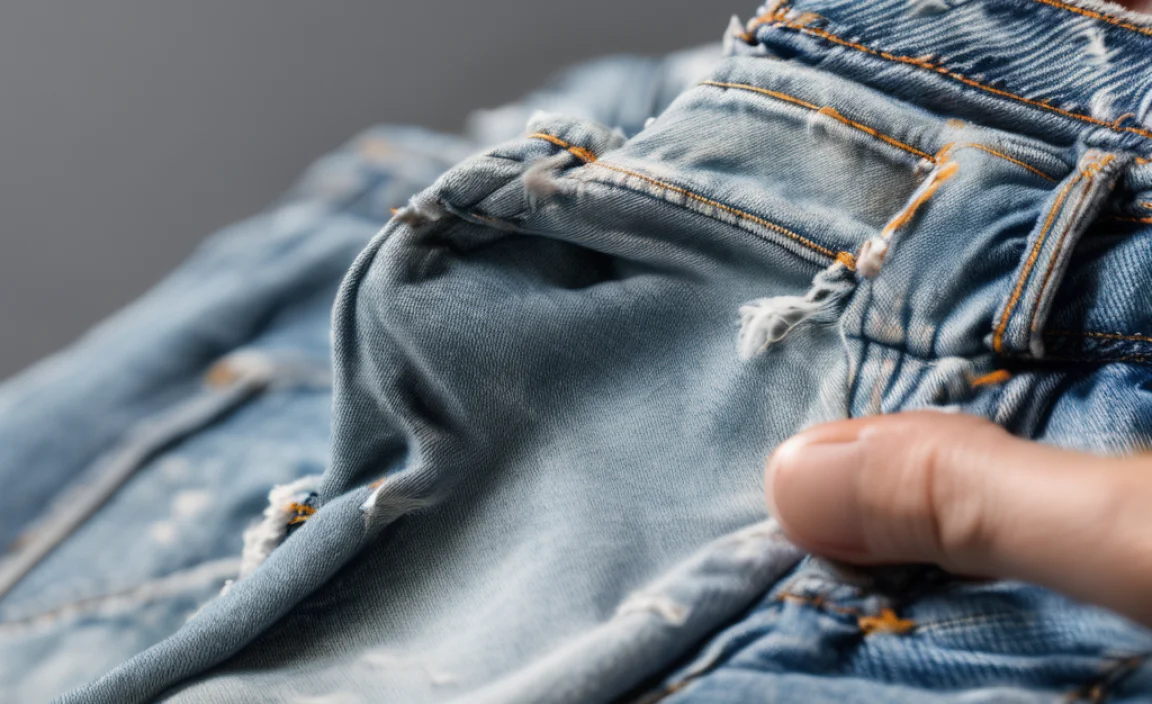
Light wash denim is more prone to showing imperfections, including discoloration from cleaning agents or excessive scrubbing. Here’s how to protect your favorite light wash pair:
- Color Fastness: Always test any cleaning solution on an inconspicuous area of the jeans first. Light washes, especially those with dye treatments, can be sensitive.
- Avoid Bleach: While bleach might seem like a go-to for stains on light fabrics, it can permanently alter the color of your denim, creating unwanted white spots or a patchy look that is very difficult to fix. Stick to gentler solvents and cleaning agents.
- Gentle Fabric Interaction: Avoid using stiff brushes or excessive force. Over-scrubbing can wear down the denim fibers, creating a faded or frayed appearance, particularly on the areas you’re trying to clean.
- Patience Pays Off: Removing dried paint from light wash jeans often requires multiple applications of your chosen cleaning solution and gentle effort. Rushing the process increases the risk of fabric damage.
DIY Stain Remover Paste
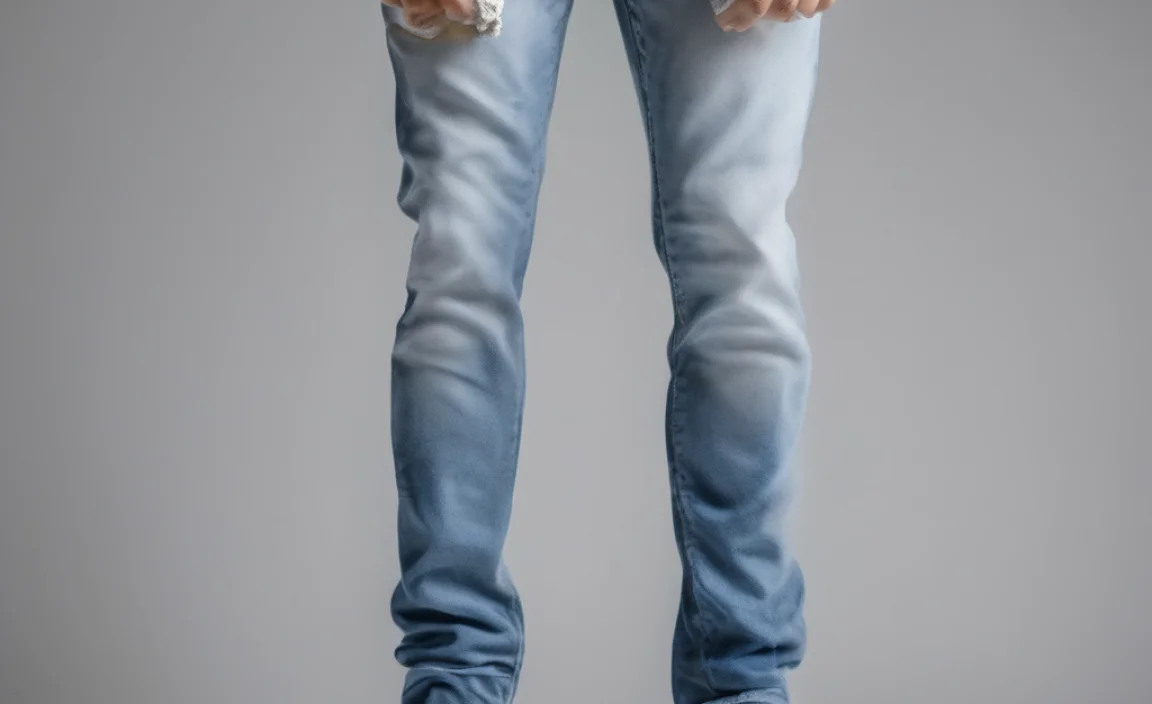
For stubborn dried paint spots, a homemade paste can offer a targeted cleaning approach. This method uses common household items to create a gentle abrasive and solvent.
What You’ll Need:
- Baking soda
- Water
- Mild dish soap
- A small bowl
- A soft-bristled brush
- Clean cloths
Step-by-Step:
- Mix the Paste: In a small bowl, mix approximately 2 parts baking soda with 1 part water. Add a few drops of mild dish soap and stir until a thick, paste-like consistency is formed.
- Apply to Stain: Apply the paste directly onto the dried acrylic paint stain, ensuring it’s well covered.
- Let it Sit: Allow the paste to sit on the stain for at least 30 minutes, or even a few hours for very stubborn marks. The baking soda acts as a mild abrasive, and the water and soap help to break down the paint.
- Gently Scrub: Use the soft-bristled brush to gently work the paste into the stain.
- Wipe and Rinse: Use a damp cloth to wipe away as much of the paste and loosened paint as possible. Then, rinse the area thoroughly with cool water.
- Launder: Wash the jeans as usual in a cool cycle. Air dry to check the results.
The Power of Glycerin
Glycerin is a humectant that can help to rehydrate and soften dried paint, making it easier to remove without harsh chemicals. It’s particularly good for delicate fabrics.
What You’ll Need:
- Vegetable glycerin (available at most pharmacies or craft stores)
- Warm water
- Mild dish soap
- Clean cloths
- Soft-bristled brush
Step-by-Step:
- Apply Glycerin: Apply a generous amount of vegetable glycerin directly onto the dried acrylic paint stain. Ensure the entire area is covered.
- Let it Work: Allow the glycerin to soak into the paint for at least 30 minutes. For tougher stains, you can leave it on for a few hours.
- Add Warm Water and Soap: Dampen a cloth with warm water and few drops of mild dish soap.
- Gently Rub: Gently rub the stained area with the damp, soapy cloth. The glycerin should have softened the paint, making it easier to lift. You can also use a soft-bristled brush to help loosen any remaining particles.
- Rinse and Blot: Rinse the area thoroughly with cool water and blot with a clean, dry cloth.
- Launder: Wash the jeans on a cool cycle. Air dry to ensure the stain is gone before drying with heat.
Table: Comparison of Removal Methods
Here’s a quick look at the effectiveness and potential risks of each method:
| Method | Effectiveness on Light Wash Jeans | Potential Risks | Best For |
|---|---|---|---|
| Fresh Paint Removal (Water & Soap) | Very High | Low (if done promptly and gently) | All fresh acrylic paint stains |
| Rubbing Alcohol | High | Slight color fading if over-applied or not tested | Dried acrylic paint stains |
| Hairspray (Alcohol-Based) | Moderate to High | Low risk, but test for any transfer of color from hairspray | Dried acrylic paint stains, especially smaller spots |
| Acetone | Very High | High risk of color alteration, fabric damage, or weakening | Very stubborn, dried acrylic paint (use as last resort with caution) |
| Baking Soda Paste | Moderate | Low risk of abrasion if gentle scrubbing is used | Dried acrylic paint stains, acting as a gentle abrasive |
| Glycerin | Moderate | Low risk, as it’s very gentle | Dried acrylic paint, especially for preventing fabric damage |
What If the Stain Persists?
Sometimes, despite your best efforts, a faint shadow of the paint stain might remain. If this happens, consider these options:
- Repeat the Process: Often, a second or third attempt with the same method can lift the remaining trace of paint.
- Professional Cleaning: For very precious or expensive light wash jeans, a professional dry cleaner might have specialized solvents and techniques to address stubborn stains. Be sure to inform them about the nature of the stain (acrylic paint) and what you’ve already tried.
- Embrace the Mark: In some cases, a very faint stain can become part of the jeans’ story. If it’s minimal and not too distracting, you might decide to live with it.
Preventing Future Paint Mishaps
The best way to deal with paint stains is to avoid them! Here are a few tips for your next creative endeavor:
- Wear an Apron or Old Clothes: This is the simplest and most effective preventative measure.
- Protect Your Workspace: Cover your work area with old newspapers, a drop cloth, or a plastic sheet.
- Work in Zones: If possible, keep your paints and your light wash jeans in separate areas to minimize the risk of accidental splatters.
- Keep Wet Wipes Handy: Having moist cloths or baby wipes within easy reach can help you tackle small drips immediately before they dry.
Frequently Asked Questions (FAQ)
Q1: Can I use nail polish remover to get acrylic paint off jeans?
A: Yes, but only if it contains acetone, and you must use it with extreme caution. Test in an inconspicuous area first, as acetone can potentially discolor or damage the denim. Apply sparingly and only to the paint itself.
Q2: Will scrubbing make the stain worse?
A: Vigorous scrubbing can spread the paint and damage the denim fibers, especially on light wash jeans where wear marks are more visible. It’s best to use gentle blotting, dabbing, and light brushing motions.
Q3: How long do I have to remove acrylic paint before it’s permanent?
A: Acrylic paint becomes harder to remove the longer it sits, especially after it has dried and cured. Fresh paint is easiest. Dried paint can often be removed, but it requires more effort and patience. Once heat-set by a dryer, it becomes significantly more difficult.</p


